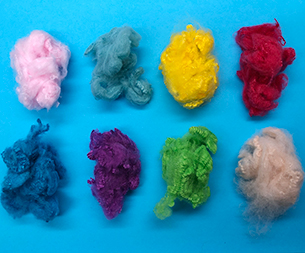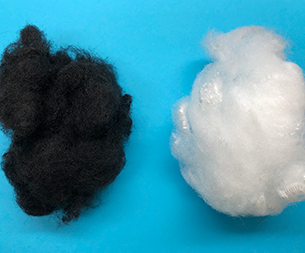Recently, a price increase notice has been circulated in the printing and dyeing circle of friends. Fifteen textile printing and dyeing companies have stamped the notice and decided to adjust the dyeing and finishing fees from October 28, 2020. Look at the following report
Recently, dyeing factories have adjusted their dyeing fees. This is not news. Fifteen textile companies stamped on a notice, which is also a matter of industry shaking. We know that since this period of time, the textile and apparel industry has recovered as a whole, market demand has increased significantly, and the upstream industry chain has been booming. With this, the price of raw materials such as cotton, polyester, dyes, etc. has risen across the board, and due to the surge in orders, employees are in short supply. , Had to recruit high-priced temporary workers for emergency situations, and it was difficult for employees to recruit and find everything.
2.png
In the textile market, it is constantly reported that trucks for loading in grey fabric factories have to line up, and trucks for warehousing in dyeing factories have to line up. There are not enough trucks in the market. Immediately after the warehouses of some weaving factories were emptied, the stocks were gone, and some dyeing factories began to blow up their warehouses.
Is it true that only a "cold winter" news can stir up the textile market that has been silent for more than half a year so lively?
1. Finished product market stocking and winter fabric orders "crash"
Those who are familiar with the fabric market know that around October and November in the second half of the year, the finished product spot market on the market will usher in a relatively concentrated stocking up before the year. This is also the more common "market order" in the market. This period of time has a large number of orders, limited types, and short duration.
This time period is now, and orders are coming more obviously than in any previous year. The main reason for this situation is that the foreign epidemic situation is serious, and a large number of overseas clothing companies have closed down. This has led to a sharp decline in clothing and fabric trade in the past six months. Now their inventory has bottomed and it is time to replenish.
2. End-of-year replenishment in the domestic fabric market
Also because of the extremely limited number of orders throughout the first half of the epidemic, many textile and apparel companies missed the spring and summer markets and had high inventories. Lack of confidence in the future market has led to insufficient enthusiasm for stocking in the spot market. Today, the backlog of replenishment demand is concentrated, and all kinds of orders are on the battlefield. The current winter clothing fabric orders are encountered. The market will burst the next time, reaching the level of this year. The highest peak of the market.
3. Dual factors at home and abroad drive industry development
"At present, our orders have been queued to January next year, and we are now in full capacity production. In September, the company's output value increased by about 25% year-on-year." Wugang Knitting Co., Ltd. is the president of the Municipal Knitwear Industry Association, specializing in the production and sales of various The products are mainly supplied to downstream apparel companies. The chairman of the company, Wu Gang, learned from customers in Henan, Shandong, Sichuan and other places that some clothing companies have sold out the inventory of the previous two years. In his analysis, the domestic textile and apparel industry's recovery is mainly due to the superimposed influence of domestic and foreign dual factors.
On October 19, the workshop of Wugang Knitting Co., Ltd. in the Huadian functional area of the development zone was busy. In order to catch up with the goods, even office staff joined the production line. Compared with the first half of this year, such a scene looks like a two-fold sky.
On the one hand, in the second half of the year, a large number of textile and apparel orders were transferred from abroad to domestic. Affected by the epidemic, many textile and apparel companies in India, Pakistan and other countries cannot guarantee normal delivery. In order to ensure continuous supply, European and American retailers have transferred a large number of orders to China for production. According to public data, in August, national textile exports totaled US$14.72 billion, a year-on-year increase of 47%; clothing exports totaled US$16.21 billion, a year-on-year increase of 3.2%, achieving positive monthly growth for the first time this year.
Secondly, the steady recovery of the domestic economy has driven demand growth and the arrival of the traditional "golden nine silver ten" consumption season has also stimulated textile and apparel consumption.
However, Wu Gang said that the surge in textile and apparel orders from abroad is mainly from more developed regions such as Europe and the United States, while the growth in regions such as the Middle East and Africa is not obvious.
The rapid increase in orders in the short term has also brought new troubles to textile and garment companies-the prices of raw materials such as dyes, cotton, and polyester in the upstream have soared, and it is difficult to find a single product.
"In the first half of the year, because of the downturn in the market, upstream companies are controlling inventory." Wu Gang said that after the rapid increase in clothing output, raw materials such as yarns are in short supply, prices have risen by about 10%, and delivery is uncertain. In the past, when you buy yarn, you can get it in two or three days after you make a payment. Nowadays, it may not arrive after you make a payment for more than half a month. Wu Gang said frankly that he has been in the textile industry for more than 20 years and has not encountered such a situation in ten years. "In 2010, multiple factors at home and abroad have superimposed and the price of raw materials has skyrocketed, causing many clothing companies to be overwhelmed. At present, the 10% increase in raw materials is still within the normal range, and will not have a great impact on the subsequent development of the industry. "
However, not all raw materials in the textile and apparel industry are in short supply and prices are soaring. Zhejiang Feixiang Thread Industry Co., Ltd., located in Changsonggang Functional Zone of the Development Zone, mainly produces gold and silver wires, gold and silver threads and other products. As a niche category of decorative clothing accessories, its sales are mainly subject to fashion trends and are not greatly affected by the general environment. Therefore, prices and sales are relatively stable.
2
Recently, some textile fabric enterprises in Quanzhou reported that they have contacted many diverted orders from European and American customers in India, Pakistan, and the Middle East, which was rare in the past. However, since most of them are low-end textile and fabric products, it remains to be seen and follow-up negotiations whether these orders can actually land in Quanzhou.
Quanzhou North Textile's Zhang Zishe recently suddenly received a request for negotiation of textile fabric orders diverted from India. He said, “In the past, we could not receive a single order from India.” According to him, this year, affected by the epidemic, some European and American end customers have delivered orders to Indian textile companies. The question is, "These foreign customers are now placing orders for next summer's clothing, which will be confirmed by September in previous years, but this year to now, they are still looking for order-manufacturing companies worldwide."
Zhang Zishe is not the only person in Quanzhou who has contacted India to diversify orders. According to a person in charge of the Shishi Fabric Industry Association, many of their member companies have recently received diversion orders from the Middle East, India and Pakistan, but most of them are low- and medium-grade fabrics.
Therefore, the textile industry generally judges these so-called "diversion orders" as "emergency orders." "I think that more orders of this kind are an emergency move. The transfer speed is fast, and buyers pay more attention to factors such as price and processing speed. Once India's production capacity is restored, the domestic production cost advantage will decrease, and whether the orders can stay in the country for a long time needs further Observation." said a researcher in the textile industry of the China Securities Futures Agricultural Products Team.
Although the negotiations are still ongoing, Zhang Zishe believes that because these orders are generally low-end products, and the current domestic production costs are much higher than those in India and other places, the profit of receiving orders is too low, so it is possible to really land. Little sex. "Recently, the price of domestic cotton yarn and other raw materials has risen by 15%, and chemical fiber has also risen by at least 3%. This is only in terms of raw materials. In terms of labor, the current salary of lathes is 6,000 yuan a month, while in Southeast Asia only 700 yuan. These should originally be South Asia. If the orders made in Southeast Asian countries are transferred to us, the production cost will increase a lot, which is estimated to be unacceptable to many foreign customers."
In this regard, Shi Zhengzhi, secretary general of the Quanzhou Textile and Apparel Chamber of Commerce, said: “Recently, we have also noticed reports that Indian orders have been transferred to China, but as far as I know, from the perspective of major textile exporting countries in the world, China, Vietnam, and Bangladesh , Turkey ranks in the top four, and India ranks fifth at most, with an annual export volume of less than US$10 billion. Therefore, even if some of India’s textile orders are transferred to China, the overall situation is relatively limited."
According to the introduction, most of the textiles produced in India are middle and low-end products. Many years ago, my country's low-end textile processing has been transferred to Southeast Asia. Indian cotton only produces three seasons a year, and the fiber is relatively short, which can only produce low-end products, while my country's Xinjiang cotton can produce four seasons a year, and the fiber is relatively long. Therefore, the finished products of India's textile industry are far inferior to ours. "So on the whole, the so-called order transfer has a very limited impact on the production of the textile industry in Quanzhou." Shi Zhengzhi said.
3
"Jordan Times" reported on October 20 that the clothing industry representative of the Jordan Chamber of Commerce stated that imports of winter clothing and footwear fell to 60 million yoy this year, down 14% year-on-year, and 10 million yoy less than last year.
- Jiangsu Haibang New Material Co.
- China's textile industry is at a
- Key Guide to Selecting Polypropy
- The impact of the Federal Reserv
- The core performance advantages
- China Textile Machinery: Driven
- The core applications of polypro
- Textile foreign trade has shifte
- How to choose the right polyprop
- Cross-border textile merchants a
- Markets
- Automotive Products
- Nonwoven Lining
- Geosynthetics
- Liquid Filtration
- Apparel and Textiles
- Hygiene Products
- Building and Construction
- Other Markets
- Contact Us
- Contact Haibang





